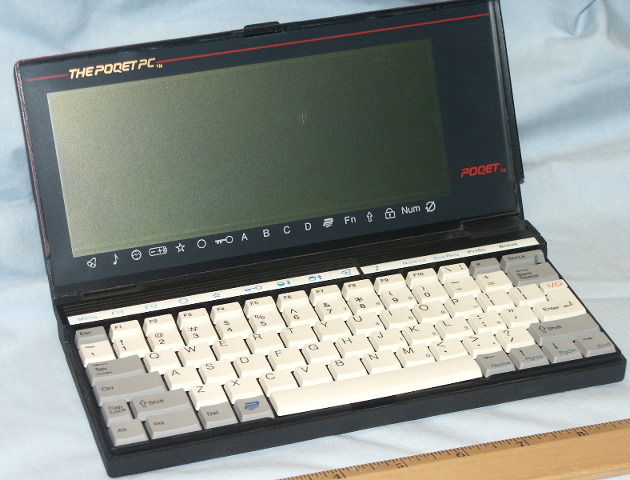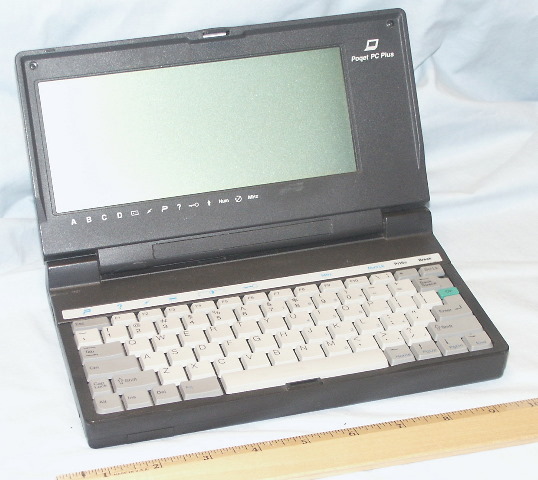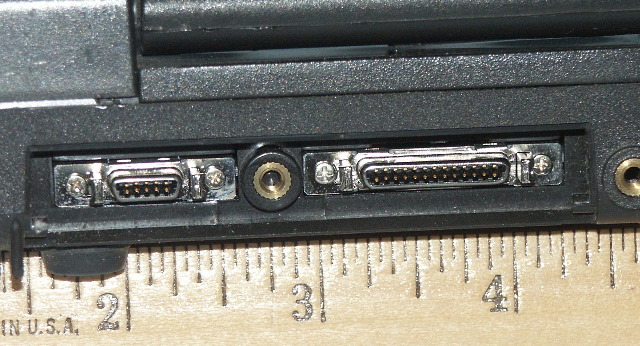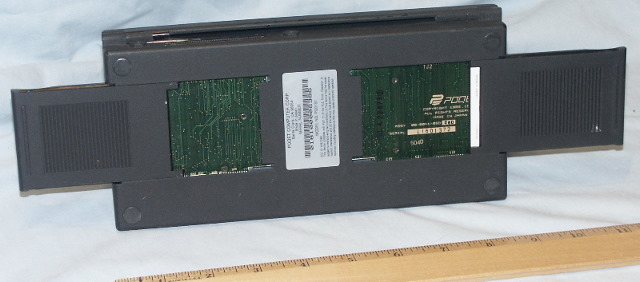Poqet PC, Prime and Plus
When the Poqet PC came out in 1989, it literally set the
computer world on it's collective ear! Who would have thought you could
make a portable computer this small and still be this powerful. Sure,
there had been other portable DOS compatibles out, but nothing even approached
this level of sophistication. The most notable was the Atari
Portfolio, but the Pofo, as it was nicknamed, had a much
smaller screen, only 128K of RAM and memory cards were totally incompatible.
The Poqet was almost 100% compatible with just about every
DOS program out there. A full 80 X 25 screen and 512K of memory and
battery life out the wazoo assured the Poqet would be a smash hit, and it was.
It was such a revolutionary computer PC Magazine awarded it their Technical
Excellence Award. And Byte Magazine gave it an Award of Distinction.
The Poqet utilized a CMOS 7MHz 8088 with 512K of RAM.
It ran what seemed like forever on 2 AA batteries. The display was a
standard CGA compatible and instead of floppy drives, 2 PCMCIA card slots were
available. Cards up to 2 Mb could be used provided they were Type I.
Memory was also divided up to include a 22K RAM Disk.
A second version, called the Prime, was introduced and bumped
RAM up to 640K. Power management utilities were significantly upgraded and
other tweaks. The ways to tell the difference between the Classic and the
Prime were to look on the top of the display. The Classic has a raised
logo and the Prime is flat. The inside display bezel also has "The Poqet
PC" in gold on the top left corner and "Poqet" in red on the lower right.
The Prime has "The Poqet PC" in white on the top right. A small stop to
prevent the screen from being opened up more than 180 degrees was also molded
into the Prime's case. DOS remained the same, 3.30, for both.
The Poqet PC Plus is an entirely different creature.
Created after Poqet had been bought out by Fujutsu, it was a quarter pound
heavier, the Plus went with DOS 5.0, a much thicker case and changed the
batteries to a rechargeable NI-CAD pack. The cpu was changed to an NEC V30
clocking at 16 MHz. The display was updated to include backlighting.
However, this greatly shortened battery life. Probably why they went with
a rechargeable pack.
The Plus could also utilize Type 2 PCMCIA cards up to a
capacity of 20 Mb.
Unfortunately, unless you were an insurance agent, you
probably weren't going to find a Prime or a Plus. Poqet/Fujitsu determined
this would be the primary market for these 2. Not sure why, but by doing
so, they really restricted their market for these. Eventually, Fujitsu
gave up on this particular market and sold their remaining stock to California
Digital. Fact is, if you want a Plus, you can still get it today from
them. Check it out!
Of course, there's always ebay!
Before giving up entirely on the Poqet nameplate, Fujitsu did
come out with something called the PoqetPad Plus. Sort of a PDA/workslate
type of computer, it had a virtual keyboard and a stylus. Essentially, it
was a Plus without a keyboard. There's not a whole lot of information on
the web about this particular item.

The original Poqet PC. You can see the gold logo on the top left
and the red logo on the bottom right. |

The Prime. Logo is down to white on the top right. Little
more memory, but essentially the same machine. |

The Plus. It even looks heavier. Actually, it's only a few
ounces heavier, but battery life is MUCH lower. But the display is
easier to read! |

Yep, Poqet even had an external battery powered floppy drive if you
needed it. |

Now this is a pain in the rump! This is the parallel interface.
You have to screw this heavy clunker into the expansion bus. Not a
very intelligent design. |

The parallel and serial ports on the Plus. Somewhat better, but
like I said on the Zeos Pocket PC, where in the heck do you find these
connectors!?!?!? |

The PCMCIA card slots. Looks the same for both the Classic and the
Prime. Type I only here folks. |

The Plus got the ability to use Type II cards with a greater capacity. |
Return
to McCain's Museum of Ancient Personal Computing
Back to front page







